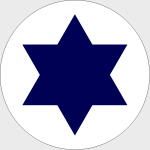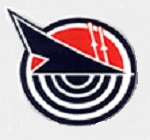Hobby Master HA19039 Israeli Defense Force McDonnell F-4E Phantom II ("Kurnass") Fighter-Bomber - 201 Squadron "The One", Tel Nof Air Base, Israel, 1974 (1:72 Scale)
"The one thing I cannot forgive the Arabs for is that they forced our sons to kill their sons."
- Israeli Prime Minister Golda Meir
 The McDonnell Douglas F-4 Phantom II is a two-seat, twin-engined, all-weather, long-range supersonic fighter-bomber originally developed for the U.S. Navy by McDonnell Aircraft. Proving highly adaptable, it became a major part of the air wings of the U.S. Navy, Marine Corps, and U.S. Air Force. It was used extensively by all three of these services during the Vietnam War, serving as the principal air superiority fighter for both the Navy and Air Force, as well as being important in the ground-attack and reconnaissance roles by the close of U.S. involvement in the war.
The McDonnell Douglas F-4 Phantom II is a two-seat, twin-engined, all-weather, long-range supersonic fighter-bomber originally developed for the U.S. Navy by McDonnell Aircraft. Proving highly adaptable, it became a major part of the air wings of the U.S. Navy, Marine Corps, and U.S. Air Force. It was used extensively by all three of these services during the Vietnam War, serving as the principal air superiority fighter for both the Navy and Air Force, as well as being important in the ground-attack and reconnaissance roles by the close of U.S. involvement in the war.
First entering service in 1960, the Phantom continued to form a major part of U.S. military air power throughout the 1970s and 1980s, being gradually replaced by more modern aircraft such as the F-15 Eagle and F-16 Fighting Falcon in the U.S. Air Force and the F-14 Tomcat and F/A-18 Hornet in the U.S. Navy. It remained in service in the reconnaissance and Wild Weasel roles in the 1991 Gulf War, finally leaving service in 1996. The Phantom was also operated by the armed forces of 11 other nations. Israeli Phantoms saw extensive combat in several Arab-Israeli conflicts, while Iran used its large fleet of Phantoms in the Iran-Iraq War. Phantoms remain in front line service with seven countries, and in use as an unmanned target in the U.S. Air Force.
Phantom production ran from 1958 to 1981, with a total of 5,195 built. This extensive run makes it the second most-produced Western jet fighter, behind the famous F-86 Sabre at just under 10,000 examples.
The F-4 Phantom was designed as a fleet defense fighter for the U.S. Navy, and first entered service in 1960. By 1963, it had been adopted by the U.S. Air Force for the fighter-bomber role. When production ended in 1981, 5,195 Phantom IIs had been built, making it the most numerous American supersonic military aircraft. Until the advent of the F-15 Eagle, the F-4 also held a record for the longest continuous production for a fighter with a run of 24 years. Innovations in the F-4 included an advanced pulse-doppler radar and extensive use of titanium in its airframe.
Despite the imposing dimensions and a maximum takeoff weight of over 60,000 pounds (27,000 kg), the F-4 had a top speed of Mach 2.23 and an initial climb of over 41,000 ft per minute (210 m/s). Shortly after its introduction, the Phantom set 15 world records, including an absolute speed record of 1,606.342 mph (2,585.086 km/h), and an absolute altitude record of 98,557 ft (30,040 m). Although set in 1959-1962, five of the speed records were not broken until 1975 when the F-15 Eagle came into service.
The F-4 could carry up to 18,650 pounds (8,480 kg) of weapons on nine external hardpoints, including air-to-air and air-to-ground missiles, and unguided, guided, and nuclear bombs. Since the F-8 Crusader was to be used for close combat, the F-4 was designed, like other interceptors of the day, without an internal cannon. In a dogfight, the RIO or WSO (commonly called "backseater" or "pitter") assisted in spotting opposing fighters, visually as well as on radar. It became the primary fighter-bomber of both the Navy and Air Force by the end of the Vietnam War.
Due to its distinctive appearance and widespread service with United States military and its allies, the F-4 is one of the best-known icons of the Cold War. It served in the Vietnam War and Arab-Israeli conflicts, with American F-4 crews achieving 277 aerial victories in Southeast Asia and completing countless ground attack sorties.
Pictured here is a 1:72 scale replica of an Israeli McDonnell F-4E Phantom II fighter-bomber, which was flown by 201 Squadron "The One", then based at Tel Nof AFB, Israel, in 1974.
Sold Out!
Dimensions:
Wingspan: 6-1/4-inches
Length: 10-1/2-inches
Release Date: February 2023
 Historical Account: "Sledgehammer" - Israel had first expressed an interest in acquiring the Phantom in 1965, but the U.S. was not yet willing to sell the fighter to Israel and agreed to provide A-4 Skyhawks instead. After the 1967 Six Days War Israel watched with growing alarm the rapid rearmament of Arab air forces with frontline Soviet fighters and sought to renew its own fighter fleet. France, its major arms supplier until then, had embargoed all sales to Israel after a 1968 commando raid on Beirut's airport. Israel therefore once again turned to the U.S. in hope of acquiring the F-4 and in a meeting with Israeli prime minister Levy Eshkol in January 1968, president Lyndon Johnson finally agreed to look favorably on a Phantom sale to Israel.
Historical Account: "Sledgehammer" - Israel had first expressed an interest in acquiring the Phantom in 1965, but the U.S. was not yet willing to sell the fighter to Israel and agreed to provide A-4 Skyhawks instead. After the 1967 Six Days War Israel watched with growing alarm the rapid rearmament of Arab air forces with frontline Soviet fighters and sought to renew its own fighter fleet. France, its major arms supplier until then, had embargoed all sales to Israel after a 1968 commando raid on Beirut's airport. Israel therefore once again turned to the U.S. in hope of acquiring the F-4 and in a meeting with Israeli prime minister Levy Eshkol in January 1968, president Lyndon Johnson finally agreed to look favorably on a Phantom sale to Israel.
In December 1968, the "Peace Echo" deal was signed for the provision of 44 F-4Es and 6 RF-4Es to the IAF and on March 25th, 1969, Israeli crews begun training on the new fighters. Although the War of Attrition was still going on at the time, the IAF sent its best pilots and navigators to the U.S., headed by the two future F-4 squadron commanders : Avihu Ben-Nun and Shmuel Hetz. The Israeli delegation returned to Israel during August and on Friday, September 5th, the first Israel Phantoms landed at Hazor AFB. The four planes, wearing an IAF color scheme but still carrying their American markings, joined the new 201st "Ha'ahat" (The One) squadron, commanded by Shmuel Hetz. Delieveries continued at a rate of 4 per month and on October 23rd the 69th "Patishim" (Hammers) squadron was reformed at Ramat-David, headed by Avihu Ben-Nun. The type entered service as the "Kurnass" (Sledgehammer), the last aircraft arriving in May 1971.


